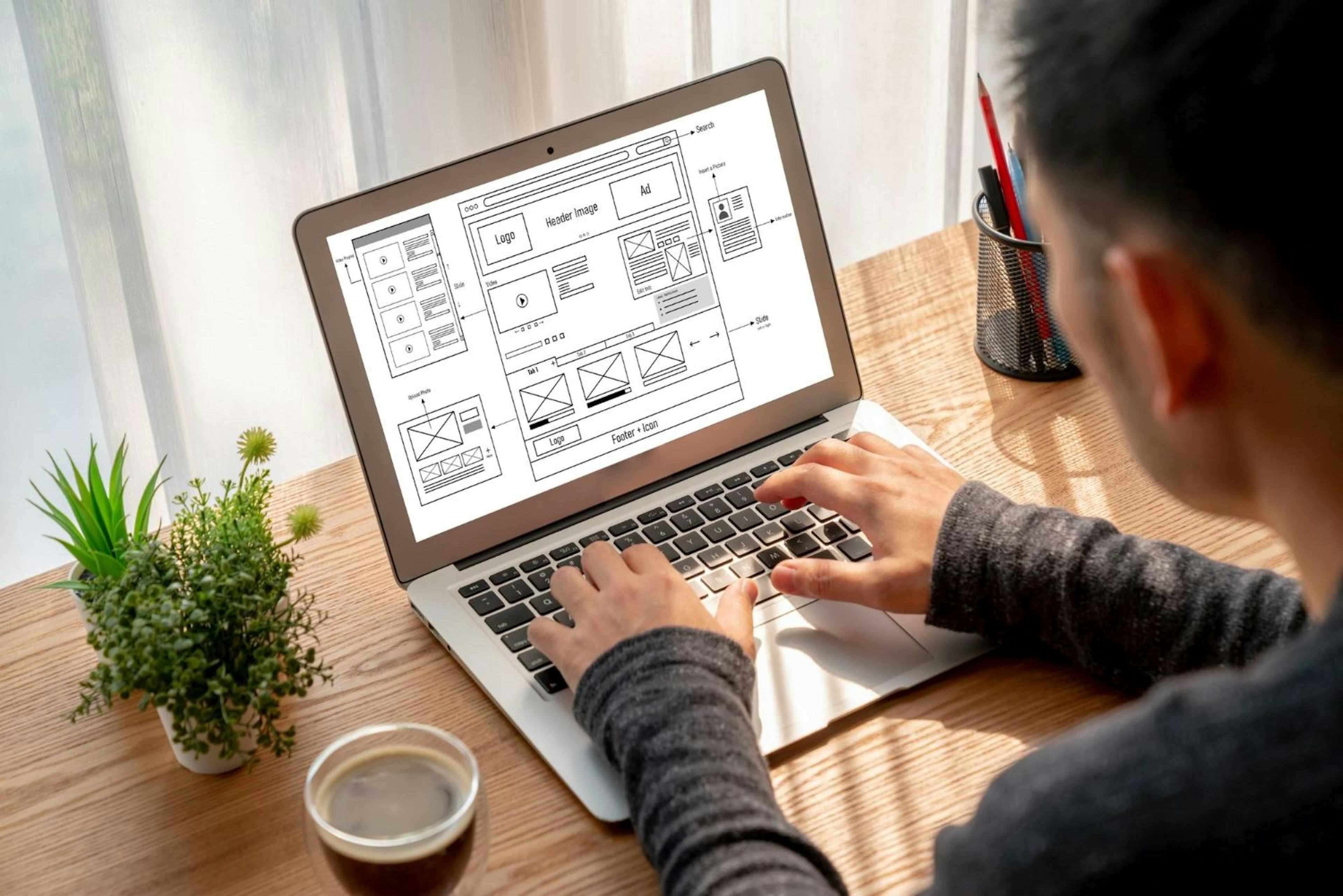
User Experience
User satisfaction is paramount in the digital realm. Discover essential strategies for user-centered UX research.

Send us your questions, we have the answers
In the competitive design landscape, user satisfaction is a cornerstone for success. Ensuring that users have a thrilling experience with a product or service can significantly impact its adoption, engagement, and long-term success. This article explores design strategies for maximizing user satisfaction, drawing from research, case studies, and industry best practices. By understanding the principles and techniques behind thrilling user experiences, designers can create products that captivate and delight users.
The foundation of designing for user satisfaction lies in understanding user needs and expectations. Thorough user research, including surveys, interviews, and usability testing, provides valuable insights into user behaviors, preferences, and pain points. By empathizing with users and deeply understanding their goals and motivations, designers can tailor their designs to effectively meet user needs. Additionally, analyzing user feedback and metrics allows designers to refine and improve the user experience over time iteratively.
Personalization and customization are crucial in thrilling user satisfaction by creating tailored experiences that resonate with individual users. By leveraging data analytics and machine learning algorithms, designers can personalize content, recommendations, and interactions based on user preferences, behaviors, and demographics. For example, e-commerce platforms use personalized product recommendations to increase sales and engagement, while streaming services curate content based on users' viewing history and preferences. By providing personalized experiences, designers can foster a sense of connection and relevance that enhances user satisfaction and loyalty.

A seamless user journey is essential for thrilling user satisfaction, as it minimizes friction and frustration throughout the interaction with a product or service. Designers should focus on creating intuitive navigation, clear pathways, and streamlined interactions that guide users towards their goals effortlessly. User journey mapping is a valuable tool for visualizing and optimizing the user experience across touchpoints and channels. By identifying pain points and opportunities for improvement, designers can optimize the user journey to maximize satisfaction and conversion rates. Moreover, ensuring consistency and coherence in design elements, such as layout, typography, and branding, contributes to a cohesive user experience that builds trust and confidence.
Interactive and engaging design elements can elevate the user experience, creating moments of delight and surprise that captivate users' attention. Incorporating animations, micro-interactions, and gamification techniques can make interactions more enjoyable and memorable. For example, progress bars, loading animations, and hover effects provide visual feedback and enhance usability, while gamified elements such as badges, rewards, and challenges motivate users to engage with a product or service. Additionally, incorporating storytelling techniques into design can create emotional connections and immerse users in a narrative that resonates with their values and aspirations.
Designing for accessibility and inclusivity is essential for ensuring that all users can access and enjoy a product or service regardless of their abilities or limitations. Following established accessibility guidelines, such as the Web Content Accessibility Guidelines (WCAG), designers can create perceivable, operable, and understandable interfaces for users with disabilities. This includes providing alternative text for images, ensuring keyboard navigation, and designing with sufficient color contrast. Moreover, considering diverse user needs and perspectives in the design process promotes inclusivity and prevents discriminatory or exclusionary practices.

Performance optimization is critical for delivering a thrilling user experience, as slow loading times and unresponsive interfaces can frustrate users and lead to abandonment. Designers should prioritize performance considerations, such as optimizing page load times, minimizing server requests, and implementing caching mechanisms. Optimizing mobile devices and low-bandwidth connections ensures that users can access and interact with a product or service seamlessly, regardless of their device or network conditions. Continuous monitoring and testing of performance metrics enable designers to identify bottlenecks and areas for improvement, ensuring that the user experience remains fast and responsive over time.
Feedback mechanisms are essential for gauging user satisfaction and identifying design improvement areas. Implementing feedback tools, such as surveys, ratings, and reviews, allows users to share their thoughts and experiences directly with designers. Moreover, monitoring user behavior through analytics tools provides valuable insights into user interactions, preferences, and pain points. By collecting and analyzing feedback data, designers can identify trends, prioritize enhancements, and iterate on the design to address user needs effectively. This iterative approach to design ensures that products and services evolve in response to user feedback, continuously improving the user experience and driving satisfaction.
As technology continues to evolve, the future of user satisfaction in design is poised to be shaped by many emerging technologies. From voice interfaces and artificial intelligence (AI) to augmented reality (AR) and virtual reality (VR), these innovations hold the potential to revolutionize the way users interact with products and services, offering new opportunities for engagement, personalization, and immersion.
Voice interfaces, powered by natural language processing (NLP) advancements and voice recognition technology, are becoming increasingly prevalent in our daily lives. Virtual assistants such as Amazon's Alexa, Apple's Siri, and Google Assistant have transformed how users interact with devices, enabling hands-free control and intuitive communication. In the realm of design, voice interfaces offer the promise of seamless and intuitive interactions, allowing users to perform tasks, retrieve information, and navigate interfaces using natural language commands. By integrating voice capabilities into products and services, designers can enhance accessibility, convenience, and user satisfaction, particularly for users with mobility impairments or those in hands-busy environments.
Artificial intelligence (AI) is revolutionizing user satisfaction by enabling predictive personalization and adaptive experiences. AI-powered algorithms analyze vast amounts of user data, including browsing history, preferences, and behaviors, to anticipate user needs and tailor recommendations and content accordingly. For example, e-commerce platforms use AI to predict product preferences and suggest personalized recommendations, while streaming services curate content based on users' viewing habits. In the realm of design, AI-driven personalization enhances user satisfaction by delivering relevant and engaging experiences that resonate with individual preferences and interests. By harnessing the power of AI, designers can create dynamic and adaptive interfaces that evolve with user interactions, maximizing satisfaction and engagement over time.
Augmented reality (AR) and virtual reality (VR) technologies offer immersive and interactive experiences that redefine user satisfaction in design. AR overlays digital content onto the physical world, while VR creates entirely virtual environments, allowing users to explore and interact with digital objects in three-dimensional space. In sectors such as retail, education, and entertainment, AR and VR enable users to visualize products, simulate experiences, and engage with content in new and immersive ways. Designers can leverage AR and VR to create compelling and memorable experiences that captivate users' attention and evoke emotional responses. Whether it's trying on virtual clothing, exploring virtual museum exhibits, or experiencing virtual travel destinations, AR and VR open up new possibilities for creativity, storytelling, and user engagement.
As designers harness the power of emerging technologies to enhance user satisfaction, ethical considerations and user privacy become increasingly important. Designers must prioritize transparency, consent, and data protection to ensure that user experiences are not only thrilling but also respectful and ethical. Moreover, as AI algorithms and predictive analytics become more sophisticated, designers must guard against bias, discrimination, and unintended consequences that may arise from algorithmic decision-making. By adopting ethical design principles and adhering to industry best practices, designers can create experiences that prioritize user well-being and trust, fostering long-term satisfaction and loyalty.
In conclusion, thrilling user satisfaction in design requires a holistic approach that considers user needs, preferences, and behaviors at every stage of the design process. By understanding users' motivations and expectations, personalizing experiences, and creating seamless user journeys, designers can create products and services that captivate and delight users. Additionally, incorporating interactive and engaging design elements, prioritizing accessibility and performance optimization, and implementing feedback mechanisms enable designers to continuously improve the user experience and drive long-term satisfaction and loyalty. Ultimately, designing for user satisfaction is not only about creating visually appealing interfaces but also about delivering meaningful and memorable experiences that resonate with users on a deeper level.

User Experience
User satisfaction is paramount in the digital realm. Discover essential strategies for user-centered UX research.

User Experience
Information architecture is key for seamless digital experiences. Learn how it can drive user satisfaction and project success.

User Experience
Prepare to ignite engagement like never before with our dynamic UX design excellence.

Unleashing Possibilities through Expert Technology Solutions
Stay up to date on the latest industry trends.